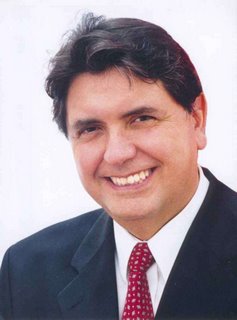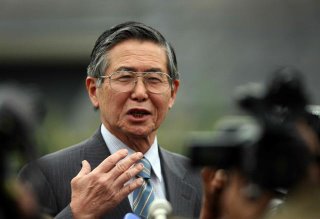
This week and the next four, the world outside the United States devotes itself to the unique quadrennial experience of the Football World Cup, something that not even the Olympics, much less other sports, are able to match.
The wave of the World Cup affects not only the 32 national teams participating in the finals at Germany, but almost all the countries of the world, with the relative exemption of the United States(paradoxically enough one of the 32 teams participating at Germany) and Canada.
The reasons of the US disinterest in football (soccer for them) lay deep within the isolationist doctrine that populist politicians imposed as a worldview in that country back in the late nineteenth and early twentieth century.
Such worldview was matched by the development in the US of powerful leagues of professional baseball and the heated disputes (often times violent) between the owners of the two main leagues (National and American) and those of competing circuits (Federal) which ultimately were prevented from participating in professional baseball.
The prohibition, issued by the Congress, grants one of the very few monopolies that exist in the United States and has been since its inception the source of interest for economists, political scientists, and sociologists interested in analyzing the evolution of those professional leagues and, more specifically, the role that governments have in shaping not only the practice of professional sports, but—generally speaking—the practice of any sport.
Sports and Government Intervention
The protection granted to baseball guaranteed during several years a special position for the sport, despite its racist practices reflecting the reality of many communities across the United States, where racism was alive and kicking despite the Civil War and the efforts of Abraham Lincoln to put and end to slavery, hiding behind the doctrine of “equal but separate.”
Such doctrine existed even in ba

seball. Besides the two “major” leagues and the complex network of “minor” leagues developing “talent” for the “majors”, it was possible to find the so-called Negro Leagues, where players of African American and Afro-Caribbean ancestry “were allowed” to play.
In Latin America it is impossible to find something similar when thinking of any given sport practiced in the region. No government has granted similar monopolies to any professional sports league and, despite some bouts of racism plaguing the histories of the professional leagues in Peru, Brazil, and other countries with sizeable populations of persons of African ancestry, sports has played since the early 1930s, a key role in the development and evolution of the nation-states, the so-called “imagined communities.”
However, if one analyzes carefully some of the histories of success and failure in the region it will be possible to observe that one key feature in, let’s say the success of the Brazilian or Argentine football national teams, has been the active (or not) role of the authorities.
At different levels the cases of Mexico and Chile, on the one hand, and Brazil and Argentina, on the other, reflect this reality. While no one would be willing to question the interest (“passion” is the code word that one finds in the Sports from all over the world) of the fans and even the level of sophistication of their professional leagues, neither Mexico nor Chile have been able to come close to Brazil or Argentina when one thinks of success.
Moreover, sadly enough the fortunes or misfortunes of the teams playing the World Cup provides fertile ground for the emergence of all types of fatalistic, providentialist, and racist “explanations.”
The “Green Mice”-Cachirules Generations
In Mexico, as one of many possible examples, up until the late 1980s and early 1990s it was possible to find references to the so-called “ratones verdes” or “green mice,” a metaphor developed out of the desperation and exasperation that caused in Mexico the elimination from the World Cup played

in the (then) German Federal Republic in 1974.
Mexico was coming from a rather good performance (for Mexican standards) during the World Cup played in Mexico in 1970, so there were all sorts of expectations and hopes about the possibility of becoming a regional football powerhouse in the North, Central American and Caribbean Football Confederation.
However, Mexico was humiliated in the qualifiers to the World cup played in Port-Au-Prince, Haiti’s capital city. Four years after the painful performance in Haitian fields, Mexico was able to qualify with relative ease for the World Cup hosted by the military regime in Argentina in 1978.
The Mexican team was assumed to be a major contender after the Olympic selection was able to win, in an odd decision, with Brazil the Gold in the Pan-American games celebrated in Mexico in 1975. Many of the players in the Olympic team (especially
Hugo Sánchez) who won the gold in the Pan-Am Games, during many years Mexico’s best feat, went to Argentina.
Sadly enough, Mexico was crushed in the first round. First Tunisia, then West Germany, the ruling World Champion, and finally Poland. The Mexican team received 12 goals and was able to score only two (to Tunisia and Poland) in what has been probably the worse record for a Mexican team in the W

orld Cup. After the humiliation in Argentina, things were still far from any improvement. Not only that, the self-defeating nick-name of “Green mice” came to summarize both the performance of the Mexican national team and, up to a certain extent, the overall attitude of many Mexicans when thinking about themselves. For the tournament in Spain (1982) Mexico was unable to qualify.
In 1986, Mexico found itself with the chance of being, once again, the host of the World Cup. With no need to go through the qualification process, the country was able to concentrate on developing a consistent team under the guidance of Velibor Milutinovic, one of the most successful coaches in the national league with the Pumas of the Universidad Nacional team. Successful especially when thinking about the development of new talent and in achieving titles in the local league.
The Mexican team ended sixth, after a painful tie with Germany that was solved with a series of penalty kicks. Despite the relative success of the Mexican team in that tournament, things went even worse before improving.
For the Cup played in Italy, in 1990, the Mexican Football Federation reached one of its all-time lows when its chairman,
Rafael del Castillo, was found responsible of registering players with fake certificates of birth and fake IDs for one of the juvenile tournaments organized by FIFA. The episode came to be known as the “cachirules,” a slang term used in Mexico to depict a crooked situation.
Del Castillo was forced out as chair of the Mexican league in the middle of a scandal fueled by the pressure of the then State-owned TV corporation Imevisión (Instituto Mexicano de Televisión) exposing the corruption plaguing the relation between Femexfut and the Mexican TV giant Televisa.
After the “cachirules” episode a process of change and adjustment in the Femexfut started but it is clear that despite the more stable performance of the Mexican national team in the tournaments held in the US in 1994, France 1998, and Korea-Japan 2002, and more importantly in the regional tournaments in North (Golden Cup) and South America (Copa América), Mexico still lags behind Brazil or Argentina when it comes to the performance of their national teams and the ability of the countries to produce football cracks.
Football, Fascism, and Populism
If one considers Argentina’s or Brazil’s football history it will be possible to find a completely different account mostly because of early and very aggressive interventions of the governments of both countries in shaping, on the one hand, the institutional framework regulating sports education and activity since the mid and late 1930s and early 1940s.
For the governments of Argentina and Brazil sports’ promotion and participation became a matter of public policy because, unlike Mexico, their governments found—early in the twentieth century—that there were a series of premiums to their involvement in this activity.
It is not out of coincidence that it was at that time that the fascist governments in Germany and Italy were colleting the fruits of their interventions in the school system favoring a more active role of physical education activities. In Germany’s case, the r

oots of such activities existed deep in the early and mid nineteenth century, and from there similar programs expanded to other countries in continental Europe.
Italy, as Argentina, and Brazil, found themselves developing these kinds of very aggressive and interventionist programs of physical education within the contexts of the emergence of
Benito Mussolini’s fascism, the Conservative Restoration of the military governments during the 1930s in Argentina, and the populist regime of
Getulio Vargas in Brazil.
It is not a coincidence that even if Mexico was living also its own populist or national-revolutionary experience with
Lázaro Cárdenas del Río, in Mexico there was no real emphasis on developing aggressive programs of physical education tailored after the models in place in Germany, Italy, Brazil, or Argentina.
Moreover, in the case of Argen

tina it was possible to observe independent and earlier developments as byproducts of the explosive rate of European immigration of the late nineteenth and early twentieth centuries and the concomitant expansion of civil rights of the governments of the Unión Cívica Radical.
These developments put athletic and sporting clubs at the center of processes of political mobilization that increased the interest of politicians in promoting the development of strong athletic traditions. This happened, among other reasons, because it was in there, in nurturing those athletic traditions were local political leaders emerged despite the gentrified and British titles of many of these organizations (as in the case of
Gimnasia y Esgrima or
Newells’ Old Boys).
Mexican "Exceptionality"
In Mexico, on the other hand, the early evolution of sports and more specifically of football was less dependent on the intervention of political leaders. Moreover, unlike Argentina, Brazil or, for these purposes, the rest of Latin America, where the only sport that allowed for the development of professional leagues was football, in Mexico it was possible to find as early as the late 1920s, despite the consequences of the Mexican Revolution, strong traditions of practice of baseball (as good as to beat twice the star-filled team of the United States in the first Baseball World Classic), and other sports such as boxing and wrestling that followed, as in the case of football, baseball, and even American football (another oddity in the Latin American context), independent paths of institutionalization and in some cases of professionalization, without

the intervention of the State.
Of course, in Argentina and other South American countries it is possible to find also strong traditions of practice of rugby and even cricket, but they did not allowed for the professionalization of the sport as in the case of football or as in the case of baseball in Mexico.
It is in this important distinction between Mexico on the one hand and Argentina and Brazil on the other, where it is necessary to find the reasons that explain the differences in the performance of the three countries in the World Cup. This is more relevant when one takes into consideration the fact that despite the apparently low level or organization of the Mexican football players, the Mexican league pays higher salaries than most of the leagues of the Western Hemisphere.
This is not to say that in Mexico there has been no attempts of intervention of the public sector in sports promotion or organization. As early as the 1930s it was possible to find attempts of the Mexican government to intervene in the sector, but these attempts were not as organized as those carried by their Brazilian or Argentine colleagues.
The trademark of the intervention of the Mexican government has been, up until Vicente Fox’s support to the bid of Guadalajara to host the Pan-American games, to provide the kinds of supports necessary to host tournaments. With the games to be organized in Guadalajara in 2011, Mexico will be the only country in the region to host those games for the third time.
Moreover, it is the only one to host the Olympics, and the only one in the region to host the Football World Cup twice. It has hosted several times the Central American and Caribbean games and other international competitions such as the

Universiada or World University Games.
Here is noticeable that other Latin American countries have tried to be hosts of the Olympics, and yet the International Olympic Committee has been unwilling to favor their proposals.
Structural reasons, Racist Excuses
Regardless of the outcome of the World Cup, when talking about the differences in the performances of countries with strong football traditions it is necessary to take into consideration the structural reasons that explain the differences in the performance of the teams.
“Explanations” as those spurred after the “Green Mice” generation shed little or no light on the issues at hand. Quite the opposite, they blur behind a curtain of inverse racism the true reasons behind Mexico’s “failure” in World football competitions and they converge in a rather explosive combination with other self-deprecatory “explanations” of Mexican “failure” as the epithet about the “raza de bronce” (bronze race) as a way to talk about the difficulties that Mexican athletes face to achieve more than third places (or bronze medals) in international competitions, connecting it with the coloration of the skin of large groups of Mexicans.
Moreover, those kinds of explanations blur also the deep regional and class divisions that explain in Mexico attendance and/or practice of different sports. Among the first type of divisions, it is necessary to take into consideration the fact that in many cities in the Northwest and Southeast of Mexico (Hermosillo and Mérida, among others) football is second in the hearts and minds of their inhabitants after baseball, and that for many generations now in large urban areas such as Mexico and Monterrey (where baseball is also very important) football competes with strong traditions of practice and attendance via TV of American football.

For many young urban males from the middle and upper classes, football expresses at different levels all that is wrong in Mexico, while American football, a sport deeply connected with what the United States represent and requiring heavy public or private investment in training facilities, equipment, and medical services, expresses better than any other sport their desire to overcome Mexico’s backwardness.
Such fixation with American football (good enough for the National Football League to take pre-season and regular season games to Mexico City’s Azteca Stadium) reflects deeper class- and race-based cleavages, frequently blurred by double standards when dealing with issues of race and national origin: highly critical of racism in the United States and yet very discriminatory of foreigners (as in the case of
Ricardo Antonio LaVolpe, the Argentine -born coach of the football team) and of Mexican Indians.
The paradoxes grow deeper, because as much as many in the country remain—at least until this Sunday morning—skeptical about LaVolpe’s role as national coach mostly because of issues of national origin (see as awful examples of it Hugo Sánchez’s trashing of La Volpe on the grounds of national origin and alleged sexual preference) many Mexicans also find comfort in rooting for the Brazilian national team as soon as the national team is eliminated in international competitions.
On a personal level, I rather stay with the “flawed” Mexican model of minimal or no governmental intervention on the field of professional or high performance sport. I think that it reflects the true nature of the authoritarian but non-ideological regime that existed in Mexico from 1929 until 1997.
However, it is almost impossible to observe how, ultimately, the lack of interventionism on this issue could play a significant role in explaining the legitimacy deficits that the Mexican polity confronted since the late 1960s. This is even more relevant when one takes into consideration not only the stories of success in football coming from Argentina and Brazil, but also the case of Cuba when it comes to baseball and other sports.
The three countries have been able, at different points in time and with different strategies, to use the successes of their national teams in different sports and international competitions to compensate for similar or even worse legitimacy deficits that those happening in Mexico after the 1960s.
The problem, of course, is that as profitable as the investment in sports programs and facilities is, questions exist regarding the legitimacy of diverting public investment into sports programs.
Technorati Tags: América Latina, Latin America, Mexico, Argentina, Brazil, Football World Cup, Negro Leagues, Baseball World Classic, Rodolfo Soriano, Social Change in Latin America





















